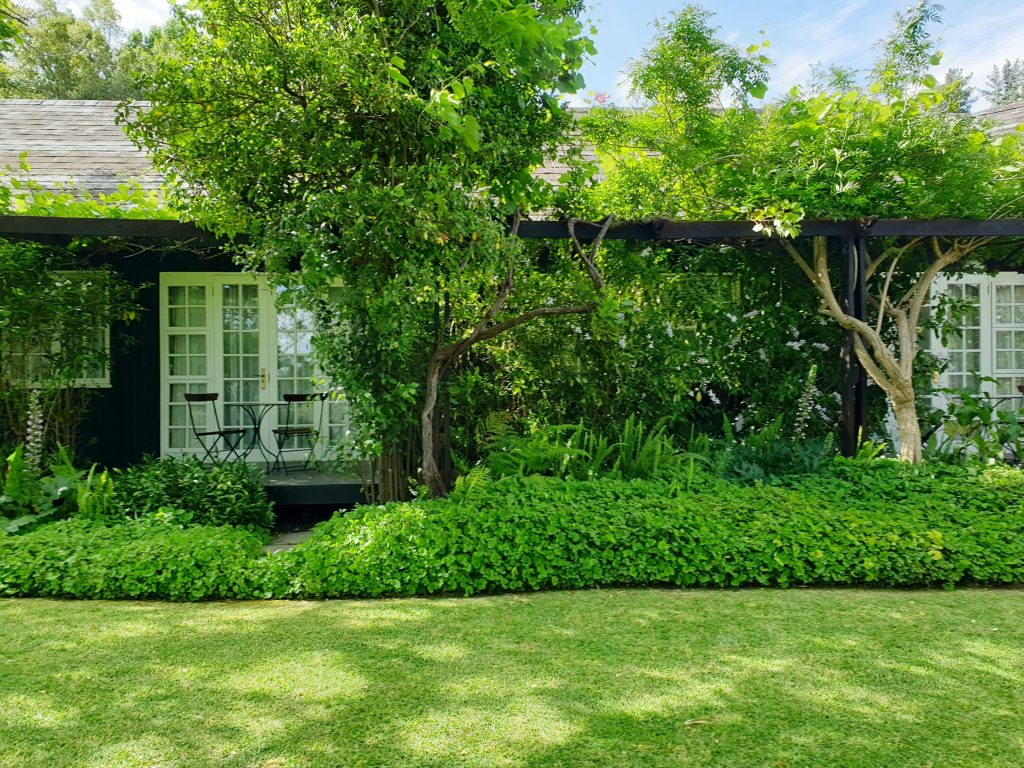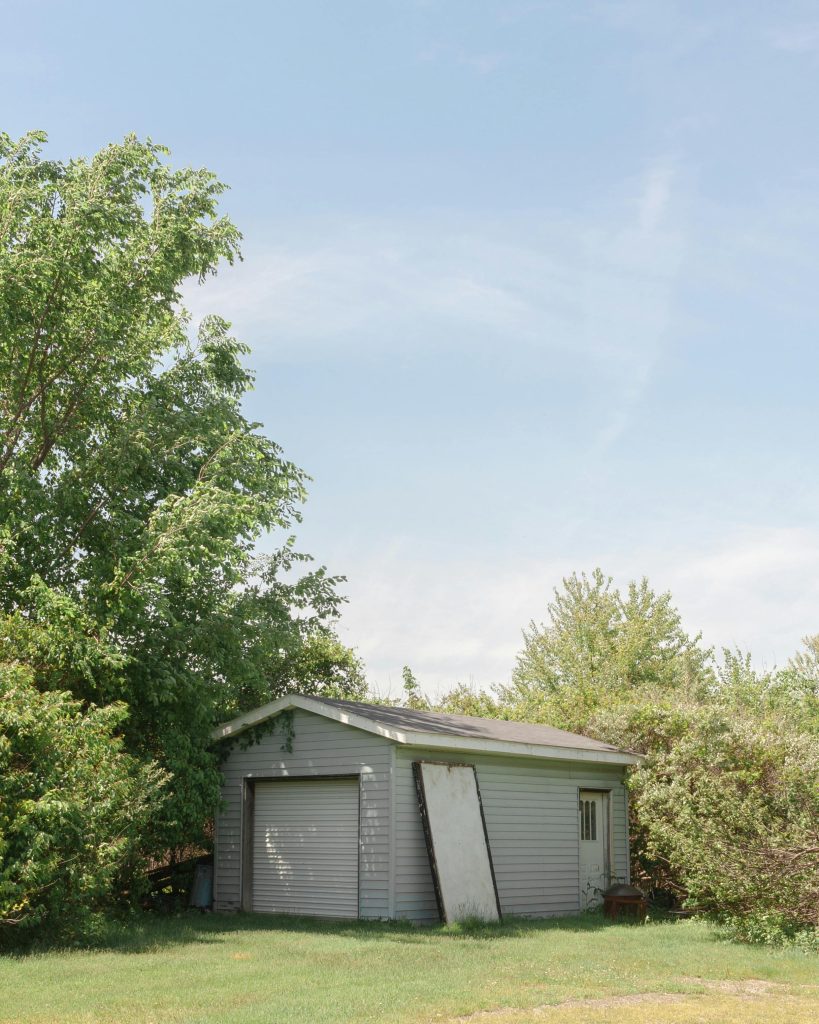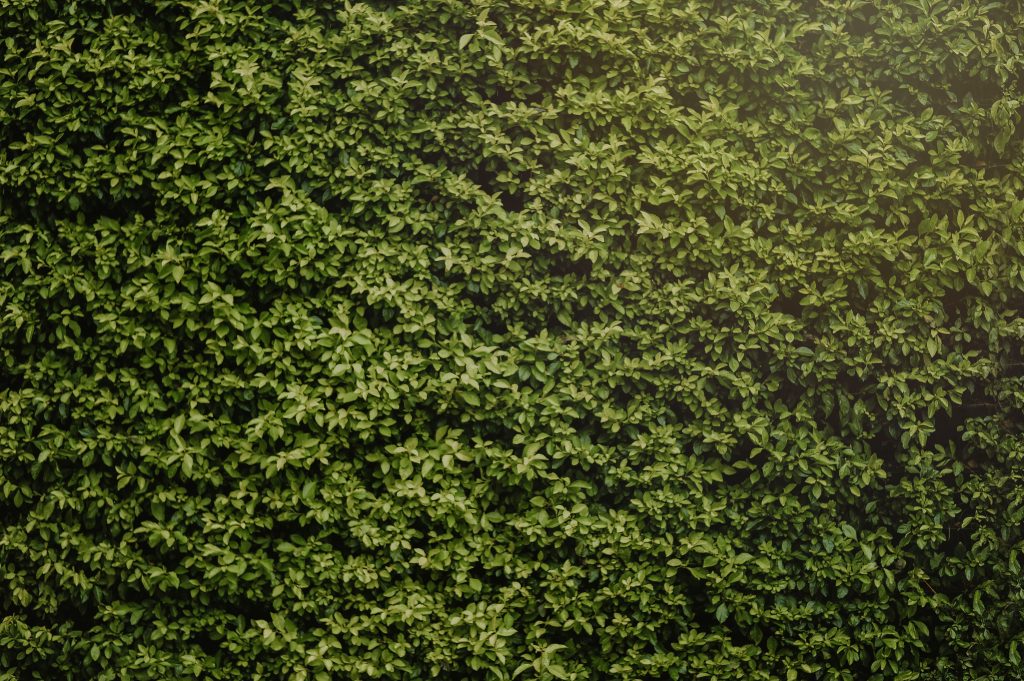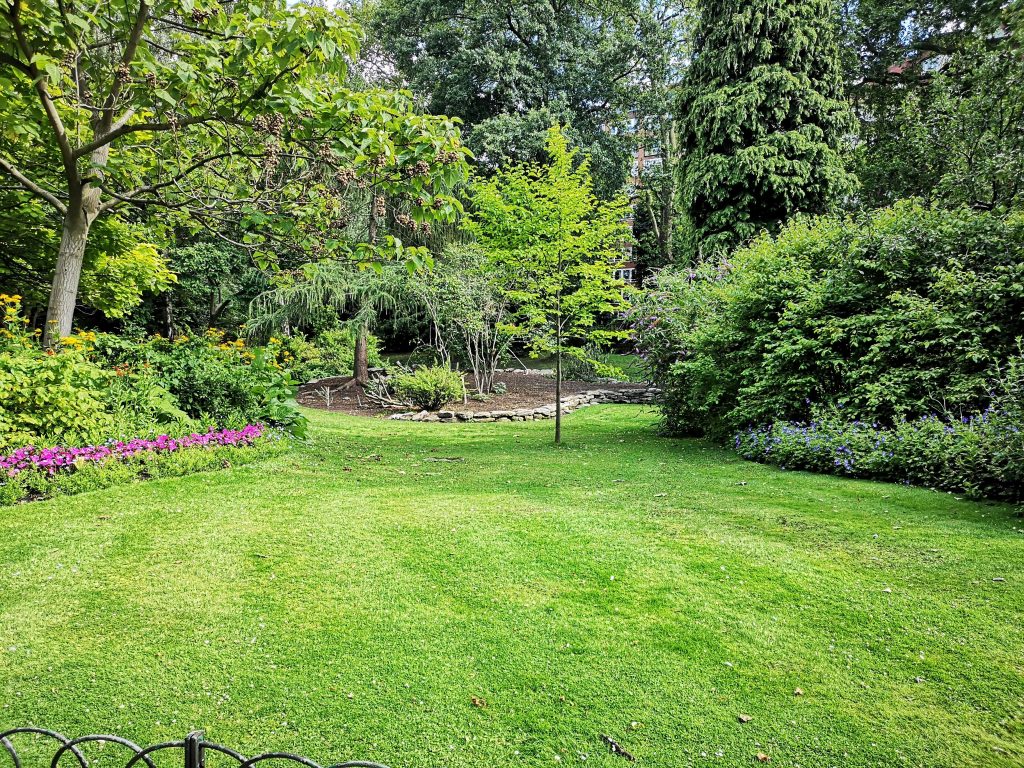As we get an unusually warm spell in the end of February, many of us are thinking about planning this summer’s garden. If you’re a prepper, you are probably thinking about growing food and possibly canning it. You will have a steadier supply of food than others if the grocery stores have limited availability. But what about those others? You don’t necessarily want to advertise your personal food source. How can you plan a “gray” garden this year?

Constraints
First, you need to think about how you need to hide it. Depending on your property, you may need to hide it from just the street, but with neighbors on all sides and a small backyard, you might have to get more creative. The other thing to think about is hiding your garden from an aerial view—either from drones or satellites. If you anticipate things getting really bad, you may want to hide that you are growing food from the government.
Second, you need to think about what your yard already looks like and how to incorporate food growing into that. Do you have lots of woods? Do you have a marshy area? Do you already have ornamental gardens? Are there restrictions in your neighborhood? An HOA?
Have all these considerations written down and draw or print out a map of your place. Then walk around your property to see what sorts of angles you’re going to want to be hiding things from. Make note of them on your map.
Depending on these variables and what skills, time, and materials you have available to you, choose the strategies that will work for your situation. Below are four strategies to consider, though there is always room for creativity when you are working with the natural world! Mix and match your strategies for the size of your garden, your yard, your abilities, and your area.
 1. Don’t Garden
1. Don’t Garden
Though this sounds like a cop out answer, learning to eat from what is already growing is by far the stealthiest way to get food. Yes, this means learning how to wild forage and eat weeds. It may not be the quickest or most productive route, but it has some serious advantages.
– No matter how hard someone looks, unless they are a botanist or a wild forager themselves, they will never suspect you have any food, thus you won’t be a target.
– There are no inputs besides knowledge. That means no effort except harvesting, and importantly, you don’t have to be reliant on a supply chain or even your community for seeds or fertilizer. Compost, however, will always be appreciated by the plants you are harvesting from! Remember, you are capable of depleting these plants just like anything, so be mindful of their ability to thrive and spread when you harvest.
– Identification skills are transferable no matter where you go (although there will be less familiar plants the further you go from home). Thus, even if you get stuck away from your property, you may be able to find some freely available food.
Besides the learning curve, the biggest con is that, depending on the land and plants available to you, you could have wildly different amounts of food that you can procure by foraging. In other words, it is less reliable. So while I find this a critical supplement to ensuring a steady food supply, perhaps the best way to use this method is in conjunction with some of the below.

2. Literally Hide It
On the other end of the spectrum is gardening as you usually would but simply blocking the view. This works fine for avoiding detection from the ground and may add a helpful level of security (from humans and from deer if you build the right fence). On the other hand, depending on your neighborhood and the nature of your fence, it may look like you have something to hide. There is also no way to hide a garden from above using this method since your plants need the sunlight.
Besides a straight-up privacy fence, though, you can get creative with the idea of hiding your veggies from view. The easiest way to keep from drawing suspicion is going to be hiding your plants with other plants.
Privacy Hedge
For this purpose, you are going to want plants that are dense and/or tall. The first thing that comes to mind for tall plants is Jerusalem artichoke (which has the added bonus of offering edible tubers in the winter). Dense plants are many. Just look up or ask your local garden center about good plants for privacy hedges. I recommend using plants that are both native (to attract more beneficial insects and pollinators to your garden) and edible.
Bramble berries (raspberries, blackberries, and their cousins) are an easy place to start and have the added security benefit of thorns but are more recognizable by the general public as food themselves. Luckily they only fruit for a few weeks in the summer. There are other less well-known berries or bushes that have edible leaves, flowers, buds, fruits, or seeds.
Living Fence
A variation on this idea is a “living fence.” In this case, you either have impenetrable plants (think roses or arborvitae) fully taking the place of a fence, or you incorporate plants with a fence (think vines or espaliered fruit trees). These types of fences typically last longer than a usual fence, look less suspicious or uninviting, and can also be edible. They may, however, take some time to grow and require trimming.
Keep in mind that when these plants die back, you will have to hide your garden in a different way, maybe by tilling it under and mulching with leaves (a good practice for fertility anyway). Evergreens, however, will provide privacy year-round.
3. Hide in Plain Sight
This is a fun one and probably the best option for heavily restricted neighborhoods. How do you hide a garden in plain sight? Put it in your landscaping.
The easiest way is to swap out ornamentals with edibles. I have heard of people getting away with planting tomatoes right in the middle of their flowers without the HOA being the wiser. This can be done, but with caution. There comes a point when hungry people are going to recognize that you have a line of peppers outside your front door.
A more gray garden might have some unusual edible plants in amongst the snapdragons. Go for strange cultivars or far-flung produce. Arctic kiwi (kiwiberries) make an impressive trellis. Lacinato kale is just as nutritious without looking like the more familiar curly kale. This sort of research can be fun. Get your family involved in finding wacky versions of the food you are used to.
Note: You must remember you have food in your garden. You may have to change your gardening practices so you have no harmful chemicals in your food. On the plus side, no one will be questioning how much time you are spending in your “ornamental” garden if you are hand weeding.
Pollinator Prairies and Food Forests
Hiding your food in plain sight doesn’t just have to be for formal landscaping, though. Every tree in your yard could be a fruit tree. Your hanging pots could have tomatoes in them.
If you have a slightly larger yard without trees, turn your lawn into a pollinator prairie. Just make sure to mow nice paths so it looks intentional, not like you’ve just neglected to mow, and plant plenty of flowers. Hiding between the flowers could be your veggies. To deter mowing or spraying, many people put a “pollinator prairie” sign out front. For someone hiding food, this helps to remove any suspicion of why your yard is not just flat grass.
The most labor intensive but by far the most rewarding version of this strategy is a “food forest.” A longstanding practice in permaculture, there are many resources out there on how to make one. The premise is that, from low-growing vegetables, to vines, to shrubs and canopy trees, you can fill your land, bottom to top, with edible food of all kinds. And it never has to look like a garden.
Food forests overlap with our last strategy: making your garden look less like a garden.
4. Don’t Look Like What They’re Expecting
If you’re family doesn’t have an adventurous palate, you don’t have the know-how for anything but veggies this spring, or you don’t have the resources to hide what you’re growing, you still have lots of ways to make a more gray garden.
Growing your typical crop plants can certainly be done, but there are less conspicuous ways to do it. I’m saying don’t do a greenhouse, raised beds, deer fence, and straight, weeded rows with cute little signs on the end. It all screams “find food here.”
Three Things to Avoid
Here are three practices to help you avoid looking like the local garden club.

First, if you are concerned about keeping your garden hidden, don’t do raised beds. They are very easy to identify and because of the elevation are pretty easy to spot at a distance. The horticultural concept of raised beds is sound, but you could do it in other ways like sheet mulching.
Second, no straight rows. Bare, straight rows are ridiculously identifiable, both from the ground and from the air. And, unless you are using a tractor, you probably don’t need them in that shape anyway. When you go to make beds, don’t do grids or rows. Instead, try circles or organic shapes—get an artistic family member involved in the design. From a distance, they will instantly strike people as ornamental gardens instead of food-producing gardens.
As for bare soil between each plant, it looks a lot like food cultivation, and it is bad for your plants anyway. Mulching is your best friend. It suppresses weeds, contributes organic matter, and keeps the moisture in the soil, requiring less watering. And on top of all that, it looks less like what people expect food cultivation to be. (Related to this idea are no till methods. That may be a good place to start looking for more subtle gardening techniques.)
Third, as mentioned before, you can choose plants that are less conspicuous as food plants. Annuals like peppers, tomatoes, squash, and corn are going to be more easily identified (and require you to work the ground much more) than perennials. Mix it up and add things like fruit trees and bushes (figs, plums, currants), herbs (sage, mint, parsley), veggies (asparagus, sweet potato, rhubarb), or nut trees (pecans, hazelnuts).
Other, Non-plant Details
If you want to get down to subtle details, there are infinite easy ways to make your activity look less agricultural, both visually and on your credit card. Things like buying wide-mesh hardware cloth instead of chicken wire to protect plants or grow potatoes in, starting plants from scraps instead of buying seed, or digging in your yard using a ball cap and a hand trowel instead of a sun hat and a shovel.
Final Thought
Growing your own food is one of the surest ways to make sure you will have food indefinitely, no matter what happens to the world. In order to keep that investment safe, incorporating some grayman-style strategies to make a gray garden can be your best bet. This year, you can make yourself a completely invisible garden or just start employing a few of the smaller practices to get in the habit so you don’t become a target.
=====
Become a Survival Dispatch Insider …
We bring together survival enthusiasts and preppers to share skills and knowledge, so you can enhance your preparedness for emergencies and ensure the safety of you and your community.
The Results You’ll Get …
Our community, courses, and memberships are pretty special. We focus on the ways it will make a huge difference in your life.
Here are a few of the things you’ll be able to do as a member of Survival Dispatch Insider …
1) Improve your emergency preparedness by learning survival skills and strategies from experienced preppers.
2) Build lasting connections with like-minded individuals that share your passion for safety and readiness.
3) Access a wealth of knowledge and resources to assist in protecting you and your community during unexpected situations.
Click HERE to get started.
=====


2 comments
There are so many wild edibles that we overlook. A few we eat are nettles, lambsquarters, dandelion, and giant ragweed. Eat what is available locally and you will be healthier.
Nettles and lambsquarters are fabulous! I haven’t heard of a way to eat giant ragweed but I will be sure to look into it!
You are right about eating locally. An herbalist friend of mine made the observation to me that the sorts of conditions you face from the land you live on (e.g. low calcium in the soil, high humidity leading to fungal growth) are the same conditions they face, and they have made biochemical adaptations to deal with them. In other words, the plants around you are naturally going to give you the nutrients and constituents you need to battle the bad stuff in your environment. Pretty cool!
Comments are closed.